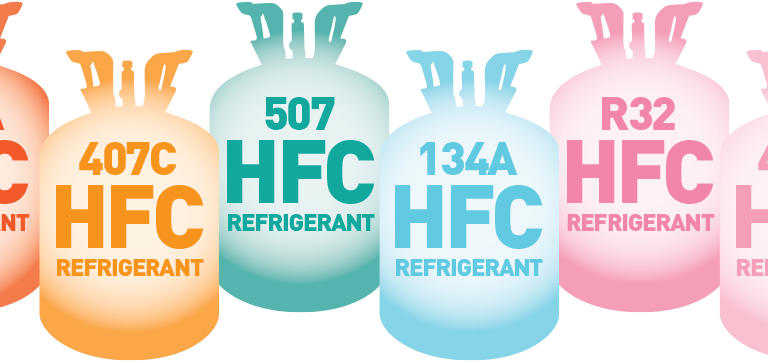Kigali Hydrofluorocarbon (HFC) Implementation Plan (KIP)
 Hydrofluorocarbons (HFCs) are commonly used alternatives to ozone depleting substances (ODS). While not ozone depleting substances themselves, HFCs are greenhouse gases (GHGs) which can have high or very high global warming potentials (GWPs). The biggest market for HFCs in Barbados and globally is the Refrigeration and Air Conditioning (RAC) sector. In October 2016 the Kigali Amendment to the Montreal Protocol was adopted by all Parties to the Montreal Protocol. The Kigali Amendment brings the production and consumption of eighteen (18) HFCs under the control of the Protocol and is expected to make a major contribution towards the fight against climate change. Control of HFC production and consumption will add to the climate benefits already achieved by the Montreal Protocol through the phase-out of ozone depleting substances (ODS) including HCFCs.
Hydrofluorocarbons (HFCs) are commonly used alternatives to ozone depleting substances (ODS). While not ozone depleting substances themselves, HFCs are greenhouse gases (GHGs) which can have high or very high global warming potentials (GWPs). The biggest market for HFCs in Barbados and globally is the Refrigeration and Air Conditioning (RAC) sector. In October 2016 the Kigali Amendment to the Montreal Protocol was adopted by all Parties to the Montreal Protocol. The Kigali Amendment brings the production and consumption of eighteen (18) HFCs under the control of the Protocol and is expected to make a major contribution towards the fight against climate change. Control of HFC production and consumption will add to the climate benefits already achieved by the Montreal Protocol through the phase-out of ozone depleting substances (ODS) including HCFCs.
The purpose of the Kigali Amendment Implementation Plan (KIP) is to prepare an overarching strategy that identifies the activities required to be implemented to achieve the phase-down of Hydrofluorocarbon (HFC) consumption by eighty percent (80%) by January 1, 2045.
Phase-Down Schedule for HFCs
| Reduction Step | Year | Goal |
|---|---|---|
| Freeze | 2024 | Freeze consumption/Freeze imports |
| Step 1 | 2029 | Reduce consumption by 10% |
| Step 2 | 2035 | Reduce consumption by 30% |
| Step 3 | 2040 | Reduce consumption by 50% |
| Step 4 | 2045 | Reduce consumption by 80% |

Baseline Calculation: Average production/consumption of HFCs in 2021, 2022, 2023 + 65% of HCFC baseline production/consumption
